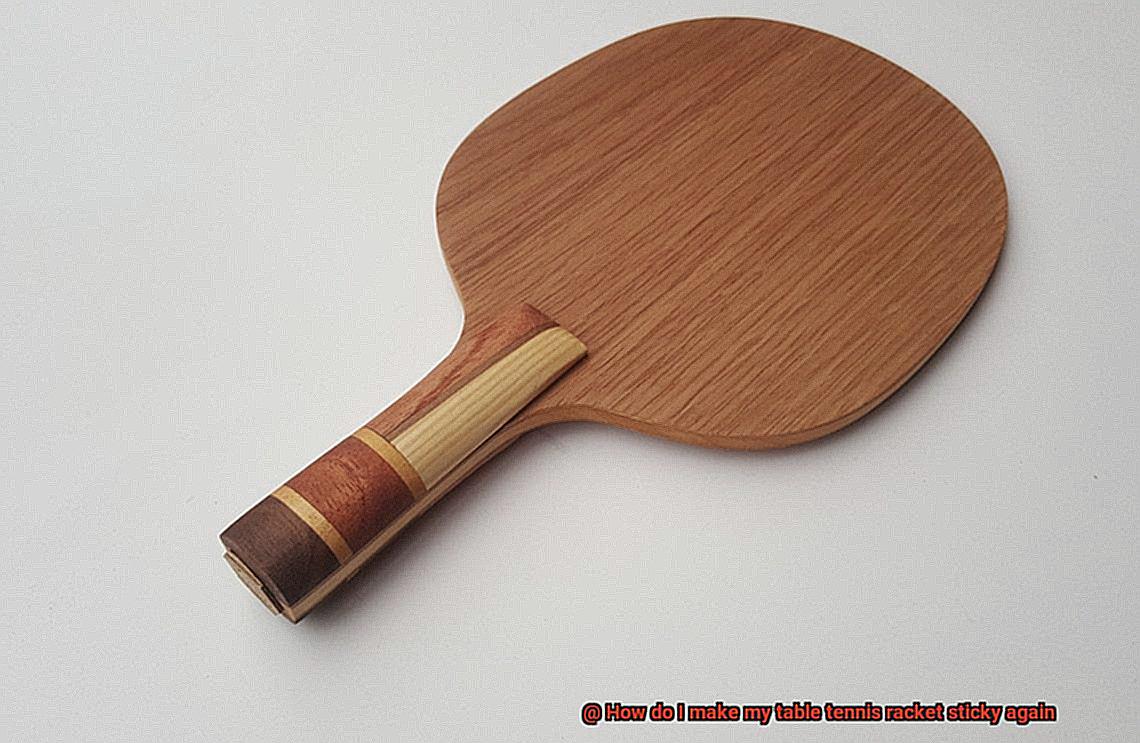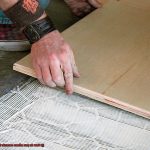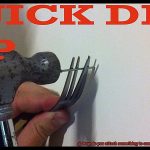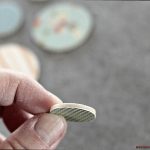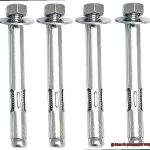Imagine this: you’re standing at the table, heart racing, laser-focused on that white ball hurtling towards you. With anticipation, you raise your racket, ready to unleash a killer topspin shot. But instead of gripping the ball like a magnet, it slips away from your smooth rubber surface like a forgotten secret.
If this scenario feels frustratingly familiar, fear not. We’re here to reignite your table tennis game and make your racket sticky again. Whether you’re a seasoned player yearning for your competitive edge or a newbie seeking an advantage, this blog post is your ultimate guide to restoring the stickiness of your beloved racket.
So, what’s the secret recipe for reviving your racket’s sticky superpowers? It’s all about proper maintenance, cleaning techniques, and a touch of ingenuity. In the following paragraphs, we’ll dive into these fantastic methods and show you how to rejuvenate your racket’s game-changing stickiness.
First up is routine maintenance – just like any well-oiled machine, your table tennis racket needs regular care to perform at its best. From checking the condition of the rubber to storing it correctly, we’ll provide you with a step-by-step guide on keeping your racket in prime shape.
Next, get ready for an array of cleaning techniques that will banish unwanted residue and restore that adhesive grip your racket once possessed. We’ll share homemade cleaning solutions as well as commercial cleaners so that you have options to suit both your preferences and budget.
But wait, there’s more. We won’t stop at conventional methods – we’ll also explore innovative techniques that can give your racket an extra boost in stickiness. Think boosting adhesives and grip-enhancing products that will take your game to new heights and ensure slippery rackets never dampen your spirits again.
Don’t let a lack of stickiness hold you back on the table tennis court. Join us as we uncover the secrets to making your table tennis racket sticky again. Get ready to unleash unstoppable topspins and unlock your true potential in the game we all love.
What Causes a Table Tennis Racket to Lose its Stickiness?
Contents
- 1 What Causes a Table Tennis Racket to Lose its Stickiness?
- 2 Cleaning the Rubber Surface of Your Racket
- 3 Using Sticky Rubber Sheets or Boosters
- 4 DIY Method: Water and Table Tennis Glue
- 5 Regular Maintenance and Cleaning of Your Racket
- 6 When It’s Time to Replace the Rubber on Your Racket
- 7 Safety Tips for Applying Sticky Sheets and Boosters
- 8 Conclusion
In the exhilarating world of table tennis, having a sticky racket is crucial for spin generation and supreme control. However, as time goes by, the rubber on your trusty racket can lose its stickiness, leaving you struggling to maintain your winning edge.
In this captivating article, we will delve into the primary causes behind this unfortunate phenomenon and provide you with effective solutions to restore your racket’s stickiness.
Wear and Tear: The Silent Culprit
Rejoice in the battles won, but be aware of the silent enemy that lurks within. As you fiercely compete, your racket’s rubber encounters countless ball collisions, resulting in gradual wear and tear. Alas, this relentless friction erodes the rubber’s tackiness, leaving you with a less sticky racket. Fear not; regular inspections and timely replacement of worn-out rubber will keep your performance optimal.
Dirt and Debris: The Sinister Saboteurs
In the heat of the game, invisible foes gather on your racket’s rubber surface. Dust particles, sweat droplets, oily residues from your hands—they all conspire against your grip and stickiness. Like a barrier between rubber and ball, these miscreants reduce your control. Fear not; diligently cleaning your racket after each session banishes these evildoers.
Environmental Conditions: Nature’s Fickle Hand
Nature’s whimsical ways can play havoc with your stickiness. High humidity swoops in, causing your rubber to absorb moisture and lose its tackiness. Conversely, low humidity leaves your rubber parched, resulting in decreased stickiness as well. Fear not; adapt to these conditions by adjusting blade and rubber combinations to maintain optimal performance.
Type and Quality of Rubber: The Key to Longevity
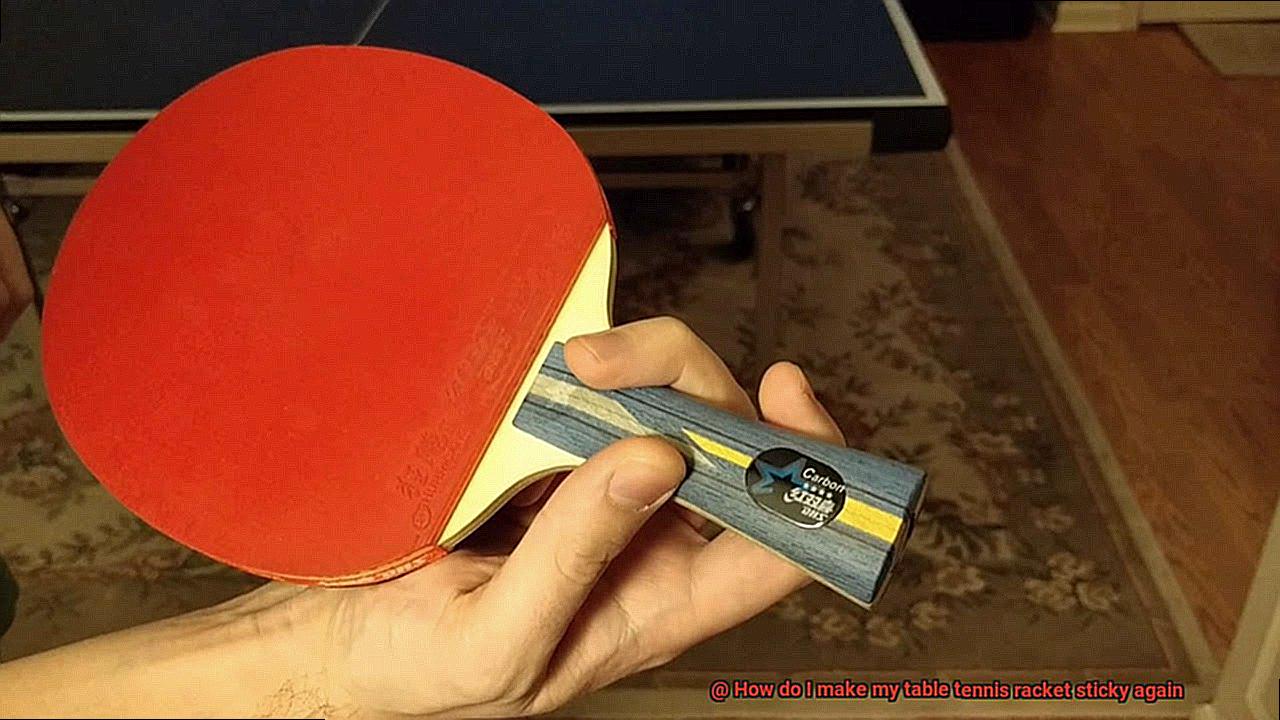
Not all rubbers are created equal; some are destined for greatness, while others succumb to mediocrity. The type and quality of rubber used on your racket determine how long its stickiness will last. Investing in high-quality rubbers ensures a prolonged period of supreme stickiness, giving you an edge over your opponents.
Cleaning the Rubber Surface of Your Racket
In our previous section, we delved into the hidden enemies that can steal away your racket’s stickiness. Today, we’re going to tackle another essential aspect of maintaining optimal performance – cleaning the rubber surface of your beloved racket. So grab your sponge and prepare to embark on a journey that will elevate your game to new heights.
Step 1: Embrace the Importance of Cleanliness
Picture this – you step onto the table tennis court, fully prepared for an intense match. But as soon as you make that first powerful swing, you realize something is off. Your once sticky rubber has lost its magic, leaving you grappling for control. This is exactly why cleaning the rubber surface is so crucial. Over time, dirt, dust, and oil build up on the rubber, eroding its stickiness and compromising your performance. Regular cleaning is your ticket to maintaining that supreme tackiness we all crave.
Step 2: Assemble Your Arsenal
Before embarking on your cleaning mission, gather your tools. Arm yourself with a damp sponge or cloth and some water. Remember, we want to treat our racket with care, so avoid using abrasive materials or applying excessive force. And here’s a pro tip – steer clear of any cleaning products containing alcohol or solvents as they can deteriorate the rubber’s surface.
Step 3: A Dance of Cleansing
Now that you’re armed with the right tools, it’s time for a tantalizing tango with your racket’s rubber surface. Starting from one side of the rubber, gently glide your damp sponge or cloth in a circular motion. Feel the debris and dirt surrendering to your touch as you meticulously cleanse every inch of the surface. Take your time and savor the transformation.
Step 4: Conquering Stubborn Stains
Sometimes, mere wipe-downs won’t do the trick when it comes to stubborn dirt or oil stains. Fear not. The heroes of the table tennis world – specialized rubber cleaners – are here to save the day. These magical elixirs are designed specifically for cleaning table tennis rubbers without causing any harm.
Using Sticky Rubber Sheets or Boosters
In our previous guide, we explored the art of maintaining your racket. Now, let’s take your game to new heights by diving into the world of sticky rubber sheets and boosters. These incredible tools can amplify the grip and spin of your racket, giving you an unbeatable advantage on the table. So, grab your sponge and brace yourself for an exhilarating journey to elevate your game.
Sticky Rubber Sheets: The Gateway to Enhanced Grip and Spin
- Enter the realm of sticky rubber sheets, where a mesmerizing tacky surface allows the ball to cling onto the rubber with unwavering tenacity, generating unparalleled spin and control.
- Step 1: With utmost care and precision, bid farewell to the existing rubber on your racket.
- Step 2: Embark on a quest to find the perfect sticky rubber sheet that aligns with your playing style and expertise level. Explore renowned brands like Butterfly Tenergy, DHS Hurricane 3, and Yasaka Rakza.
- Step 3: Masterfully apply the chosen sticky rubber sheet onto your racket, ensuring a seamless and flawless surface.
- Behold. You now wield a racket with enhanced grip and spin capabilities that will leave your opponents in awe.
Boosters: A Magical Elixir for Your Racket
- Brace yourself for the enchanting world of boosters, mysterious substances that can be directly applied to your existing rubber surface without bidding it farewell.
- Step 1: Seek out a liquid form booster from reputable brands, unlocking the door to unparalleled performance.
- Step 2: Spread this magical elixir evenly over the rubber surface, wielding a sponge or a dedicated applicator to ensure an even distribution.
- Step 3: Allow the booster to bask in the spotlight as it dries completely. This crucial step safeguards your racket from any potential damage or loss of performance.
- And just like that, you’ve tapped into an extraordinary realm of grip and spin prowess, ready to conquer the table with unrivaled finesse.
DIY Method: Water and Table Tennis Glue
If you’re craving unbeatable grip and spin, then hold onto your paddle because we’ve got a DIY method that will revive the stickiness of your racket. With just water and table tennis glue, you can transform your racket into a force to be reckoned with. Grab your cloth, sponge, water, and glue, and let’s get started.
Step 1: Gear Up
Before we dive into the magic of stickiness, make sure you have all the tools within reach. A clean cloth or sponge, water, and that all-important table tennis glue are all you need. This DIY method is simplicity at its finest.
Step 2: Prep the Rubber Surface
Now that we’ve gathered our supplies, it’s time to rejuvenate that rubber surface. Dampen your cloth or sponge with water – not too wet, just enough to do the job. Gently cleanse the rubber surface of your racket, bidding farewell to any dirt or debris that dares to hinder its stickiness.
Step 3: The Glue Game
Prepare for the secret ingredient – table tennis glue. This extraordinary adhesive is specifically crafted to amplify grip and control like nothing else. Whether you opt for a brush or prefer applying it with your fingers, coat the entire rubber surface with a thin layer of table tennis glue. Remember, less is more; we want that extra stickiness without compromising performance.
Step 4: Patience Pays Off
Now comes the hardest part – waiting. Allow the glue to dry completely before reentering the battlefield. In just 10-15 minutes, you’ll witness a resurrection of stickiness on your racket’s surface. Get ready for improved grip and control during every electrifying game.
Step 5: Maintain the Magic
While this DIY method works wonders, it’s vital to acknowledge its temporary nature. To prolong the stickiness, regular cleaning and reapplication of table tennis glue are essential. Keep your racket in peak condition and stay at the top of your game.
Regular Maintenance and Cleaning of Your Racket
Your table tennis racket is more than just a tool – it’s a crucial extension of your skills and strategy on the table. To ensure that it continues to perform at its best, regular maintenance and cleaning are vital. By following a few simple steps, you can keep your racket sticky, effective, and ready for intense gameplay. Let’s dive into the world of racket care.
Cleanliness is Key:
After each play session, take a moment to show your racket some love. Resist the temptation to toss it back into your bag and forget about it until next time. Instead, grab a clean, damp cloth or sponge and gently wipe the rubber surface. This simple act removes dirt, sweat, and debris that may have accumulated during those intense rallies. Trust me, a clean racket is a happy racket.
Protect and Preserve:
To truly elevate your racket care game, invest in a protective cover. Not only does it make you look like a pro, but it also shields your racket from dust and other contaminants that can affect its stickiness. A cover also acts as a shield against accidental damage or scratches to the rubber surface. Think of it as giving your racket a cozy little home when it’s not unleashing its power on the table.
Store Smart:
Where you store your racket matters too. Extreme temperatures and direct sunlight can be detrimental to the rubber’s longevity. Avoid these by finding a cool and dry place for your racket to rest – ideally in a racket case or bag for that extra layer of protection. Treat your racket to its own little sanctuary where it can rejuvenate between games.
Hands Off:
Keep those fingers away from the rubber surface. Oils and dirt from your skin can gradually reduce the stickiness of the rubber over time. To preserve its effectiveness, handle the racket by its handle whenever possible. This seemingly small action can make a big impact on the performance and durability of your racket.
Inspect and Replace:
Regularly inspect your racket for signs of wear and tear. Cracks, tears, or smooth spots on the rubber surface are signals that it may be time for a replacement. Over time, the rubber can lose its grip and effectiveness, and that’s okay. It simply means it’s time to bid farewell to your trusted companion and welcome a new one into your arsenal.
When It’s Time to Replace the Rubber on Your Racket
As an expert on all things related to table tennis rackets, I’m here to share valuable insights on determining when it’s time to replace the rubber on your racket. The rubber is a crucial component that directly impacts your grip, spin, and overall performance on the table. Get ready to uncover the signs, tests, and considerations that will guide you towards making the right call.
Signs it’s time for a replacement:
- Decreased Spin: Picture this – you unleash a powerful shot, expecting a whirlwind of spin, only to be met with disappointment as the ball barely rotates. If you notice a significant decrease in the amount of spin you can generate with your shots, it’s a clear sign that your rubber needs some tender loving care. The worn-out rubber fails to grip the ball effectively, resulting in less spin and making it easier for opponents to return your shots.
- Loss of Control: Precision is key in table tennis, and losing control over your shots can be frustrating. When your rubber loses its grip, controlling the trajectory and placement of the ball becomes a challenge. Inconsistent shots and struggling to keep the ball on the table are indicators that it’s time for fresh rubber. Don’t let frustration hamper your game.
- Smooth and Shiny Surface: Take a closer look at your rubber. Does it appear smooth or shiny? If yes, then it has lost its tackiness. The rubber should have a slightly sticky feel that allows you to generate spin and control the ball effectively. Once it becomes smooth, it’s time for an upgrade that will put the grip back in your game.
Determining the lifespan:
Frequency of Play: How often do you find yourself immersed in intense table tennis battles? The lifespan of your rubber depends on various factors, including frequency of play. If you’re a casual player who enjoys a few games now and then, you might get away with using the same rubber for up to a year. However, if you’re more serious and play regularly or compete in tournaments, expect to replace your rubber more frequently to maintain peak performance.

Safety Tips for Applying Sticky Sheets and Boosters
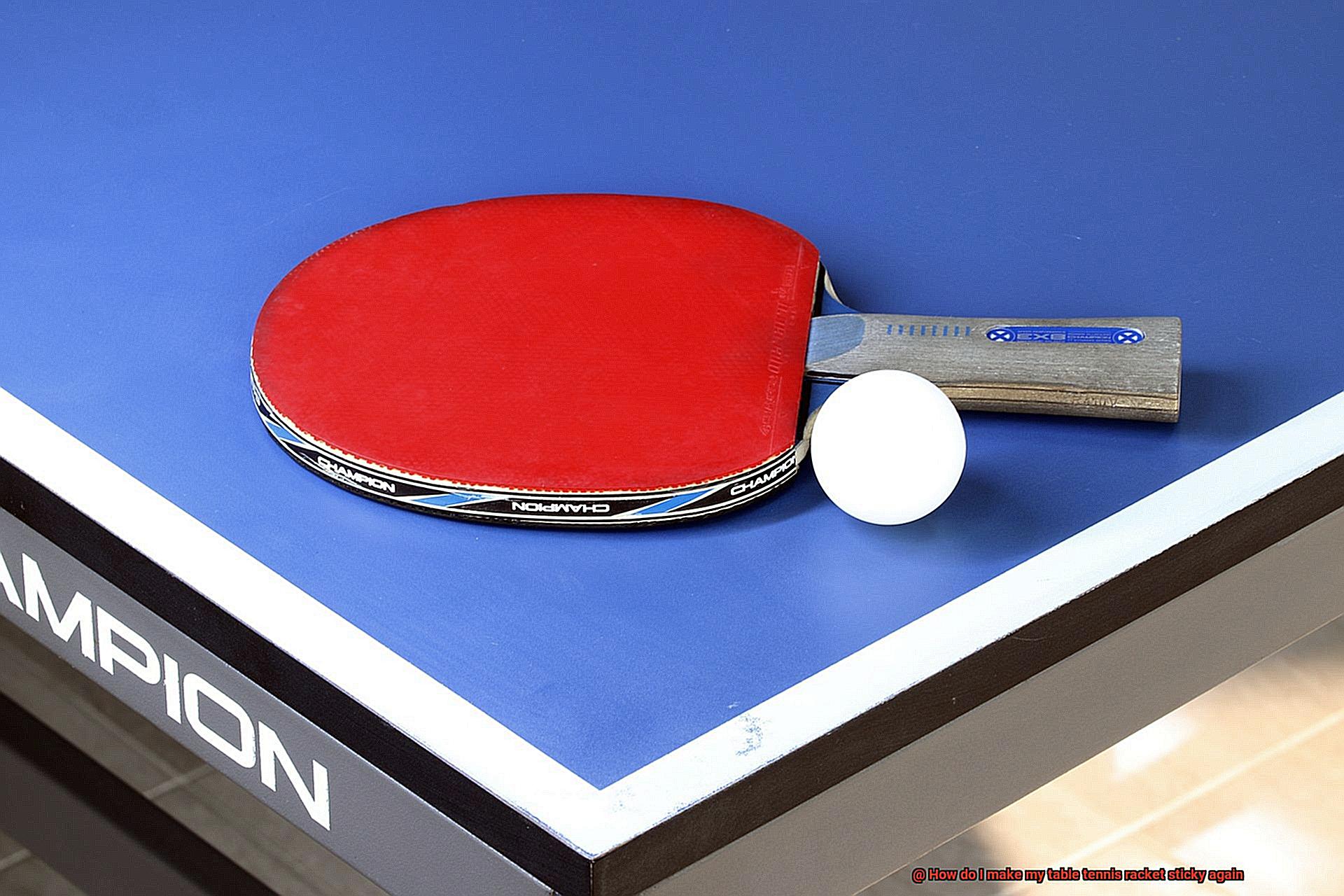
Want to regain the sticky grip on your table tennis racket? Sticky sheets and boosters can be the perfect solution, but safety should be your top priority during the application process. In this article, we’ll provide you with valuable safety tips to ensure a successful and risk-free application. Get ready to stick it right.
Read and Follow Instructions Carefully:
Before diving into the application process, take a moment to carefully read and understand the manufacturer’s instructions. Each product may have specific guidelines that need to be followed for safe and effective application. By following these instructions, you’ll ensure the best results while keeping yourself out of harm’s way.
Clean Your Racket Thoroughly:
Before applying any sticky sheet or booster, give your table tennis racket’s rubber surface a thorough cleaning. Use a soft cloth or sponge with mild soap and water to remove any dirt, debris, or remnants of old adhesive. This step will create a clean canvas for the new adhesive, ensuring optimal bonding and enhancing your racket’s performance.
Protect Your Hands with Gloves:
When working with adhesive products, it’s essential to protect your hands from potential harm or irritation. Wear protective gloves throughout the entire application process to prevent direct contact between your skin and the adhesive. By doing so, you’ll minimize the risk of allergic reactions or skin irritations that may occur with certain adhesives.
Ensure Adequate Ventilation:
Good ventilation is crucial during the application of sticky sheets and boosters. Some adhesives emit strong fumes that can be harmful if inhaled excessively. To maintain a safe working environment, ensure that you’re in a well-ventilated area. Open windows or use fans to promote proper air circulation and minimize exposure to potentially harmful fumes.
Apply Evenly and Smoothly:
Take your time and apply the sticky sheet or booster evenly and smoothly onto your racket’s surface. Avoid exerting excessive force or pressure, as this can lead to an uneven application or even damage your racket. Following the manufacturer’s instructions regarding application techniques will ensure an optimal result without compromising the integrity of your racket.
Allow Sufficient Drying Time:
After applying the sticky sheet or booster, exercise patience and allow adequate drying time before using your racket. Rushing this step may result in poor adhesion, leading to subpar performance or detachment during play. Follow the manufacturer’s recommended drying time to ensure that the adhesive fully sets and bonds with the rubber surface of your racket.
gFgNX0tNAhE” >
Conclusion
To restore the stickiness of your table tennis racket, there are a few simple yet effective methods you can try. First, give your racket a thorough cleaning using warm water and mild soap. Scrub away any dirt or debris that may have accumulated on the rubber surface. Rinse it thoroughly and pat it dry with a clean towel.
Next, consider using a specialized rubber cleaner or rejuvenator. These products are designed to remove any residue and restore the tackiness of the rubber. Apply the cleaner according to the manufacturer’s instructions and gently rub it into the surface of your racket.
If you don’t have access to a rubber cleaner, another option is to use water-based glue or adhesive sheets specifically made for table tennis rackets. Apply a thin layer of glue evenly onto the rubber surface and allow it to dry completely before playing.
For those who prefer a more natural approach, pineapple juice or lemon juice can also be used as an alternative sticky solution. Simply apply a small amount onto the rubber surface and let it sit for a few minutes before wiping off any excess liquid.
Remember, maintaining proper care and storage for your racket is essential in preserving its stickiness. Always store it in a protective case when not in use and avoid exposing it to extreme temperatures or excessive moisture.
By following these tips, you’ll be able to bring back that satisfying stickiness to your table tennis racket, enhancing your performance on the court.

